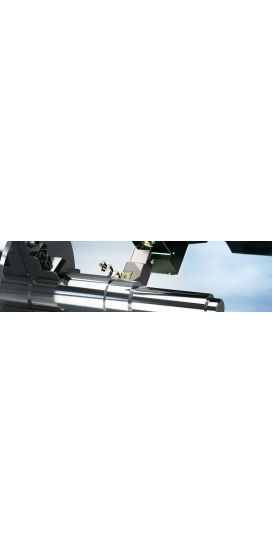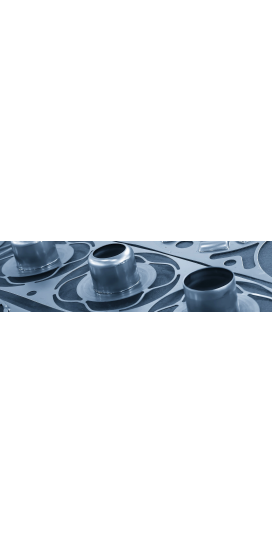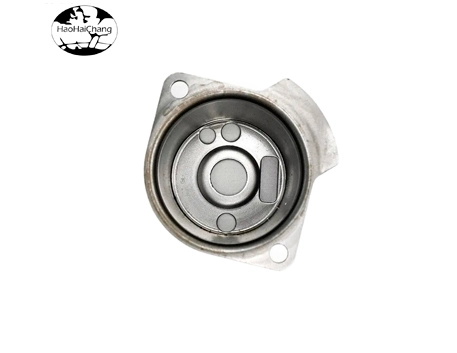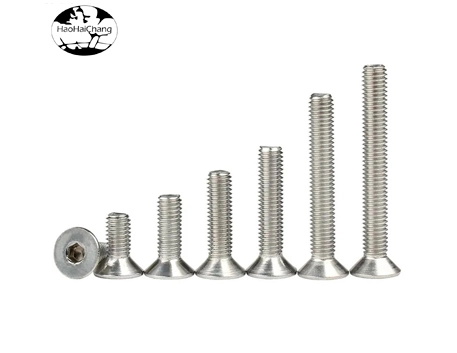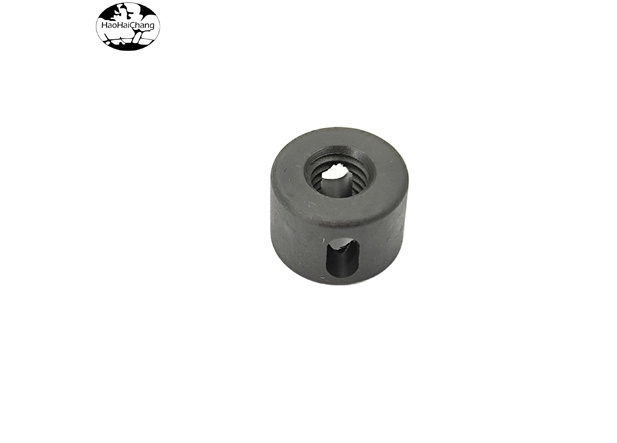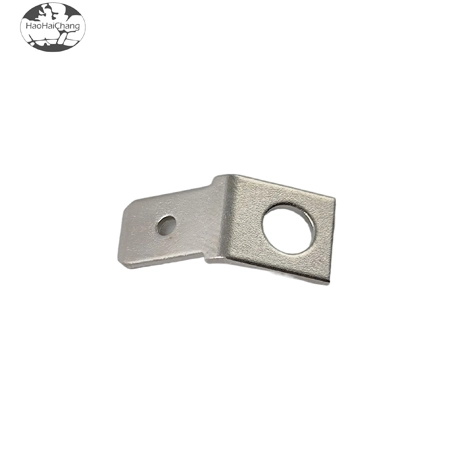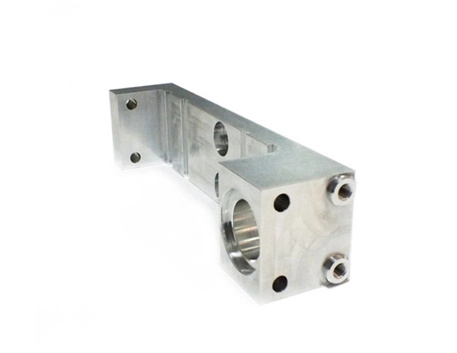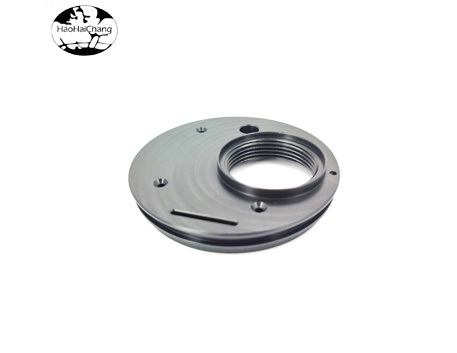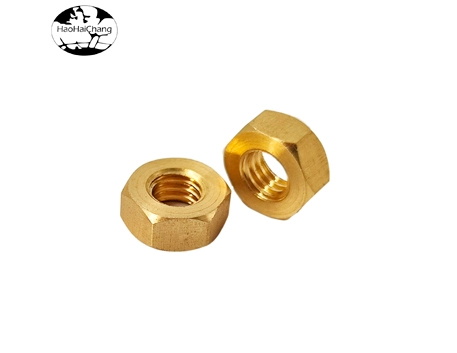CNC MACHINING PARTS
CNC (Computer Numerical Control) machining is a subtractive manufacturing process that uses computerized machine tools to make a custom-designed part. A computer uses programming codes to direct machine tools to chip at (subtract) a material. This is until the material forms the input designed part.
With the use of a wide range of materials such as metals, plastics, and composites, CNC machining can produce parts with excellent mechanical properties, durability, and corrosion resistance, making them suitable for various applications.
Advantages of China CNCParts Machining
High precision and accuracy: With CNC machining, parts can be manufactured with extremely tight tolerances and high accuracy, providing a level of consistency that is difficult to achieve with manual machining processes.
Wide range of materials: CNC machining can be used with a variety of materials, including metal, plastic, wood, and composites.
Cost-effective for high-volume production: CNC machining is ideal for high-volume manufacturing as it enables the production of large quantities of parts at a lower cost per piece.
Increased efficiency: The automated nature of CNC machining means that production can be carried out more efficiently, without the need for manual intervention, resulting in faster production times.
Versatility: CNC machining can be used to produce complex components with intricate shapes and geometries, making it suitable for a wide range of applications.
Exploring the World of China CNCMachining Prototype Service: A Look at Different Types
In the realm of precision manufacturing, Computer Numerical Control (CNC) machining stands as a technological marvel that has revolutionized the production industry. CNC machining involves the use of computerized systems to control machine tools and processes, allowing for highly accurate and efficient production of intricate parts and components. The various CNC machining processes under HHC have different application scopes and processing characteristics. The following provides a detailed classification and introduction.
One of the most common types of CNC machining, milling employs rotating cutting tools to remove material from a workpiece. The milling machine can move along multiple axes, creating a wide range of shapes, slots, and holes. From simple components to complex prototypes, milling is versatile and widely used in industries like aerospace, automotive, and electronics.
In turning operations, the workpiece rotates while a cutting tool shapes it into the desired form. This type of CNC machining is ideal for creating cylindrical components such as shafts, bolts, and spindles. Precision turning is a cornerstone of manufacturing processes, providing efficiency and accuracy for various applications.
As the name suggests, drilling CNC machines are designed to create holes in workpieces. These machines use rotating drill bits to remove material, and they are crucial in the production of components that require precise and uniform holes. Industries like construction, metalworking, and electronics heavily rely on CNC drilling for their manufacturing needs.
When extreme precision and surface finish are paramount, CNC grinding comes into play. This method employs abrasive wheels to remove material and achieve tight tolerances. CNC grinding is indispensable in the production of tools, molds, and high-precision components used in medical devices and aerospace engineering.
EDM is a non-traditional CNC machining method that utilizes electrical discharges to shape materials. By carefully controlled electrical sparks, EDM can create intricate and complex shapes with high precision. This technique is particularly useful for hard metals that are challenging to machine with traditional methods. For example, we use Electrical Discharge Machining (EDM) to customize templates for molds
CNC laser cutting involves the use of a laser beam to cut through materials, creating precise and clean edges. This method is widely used in the fabrication of sheet metal components for industries ranging from automotive to consumer electronics. The high level of precision and speed makes CNC laser cutting an invaluable process in modern manufacturing.
CNC Machining vs 3D Printing: Unveiling the Differences
In the ever-evolving landscape of manufacturing, two cutting-edge technologies have emerged as frontrunners: CNC machining and 3D printing. Each method brings its own set of strengths and applications to the table. Let's delve into the intricacies of CNC machining and 3D printing, comparing their features, advantages, and limitations.
CNC (Computer Numerical Control) machining is a subtractive manufacturing process. It involves removing material from a workpiece to achieve the desired shape. This process utilizes computer-aided design (CAD) and computer-aided manufacturing (CAM) software to precisely control the movement of cutting tools.
CNC machining is renowned for its high level of accuracy and precision. It can achieve tight tolerances and produce intricate details, making it suitable for applications where precision is paramount, such as aerospace and medical industries. CNC machining is versatile when it comes to material compatibility. It can handle a wide range of materials, including metals, plastics, and composites. This makes it a preferred choice for industries demanding durability and strength in their components. CNC machining is well-suited for both prototyping and large-scale production. While the setup time for CNC machining can be longer than 3D printing, it excels in producing high-quality, functional parts. CNC machining provides a superior surface finish compared to many 3D printing technologies. This makes it an ideal choice for components requiring a polished or smooth surface.
3D printing, or additive manufacturing, builds objects layer by layer from a digital model. It involves depositing material in a specific pattern to create a three-dimensional object. This process is highly versatile and allows for intricate geometries.
3D printing supports a diverse range of materials, including plastics, metals, ceramics, and even bio-materials. The material choices continue to expand, opening up new possibilities for various industries. 3D printing excels in rapid prototyping and is well-suited for complex geometries that may be challenging for CNC machining. However, it may not match the speed of CNC machining for large-scale production. In terms of cost-effectiveness, especially for low-volume production and prototyping, 3D printing can offer advantages due to reduced material wastage and simpler setups. 3D printing is celebrated for its customization capabilities. It allows for the creation of unique, personalized designs without the need for additional tooling, making it ideal for one-off or small-batch production.
Overall, the choice between CNC machining and 3D printing depends on factors such as materials, precision requirements, production scale, and project complexity. For larger production runs, CNC machining excels in precision and material versatility, while 3D printing shines in rapid prototyping and complex design applications.
As one of china cnc machining service manufacturers, we will do our best to meet all the needs of customer.
There are many precision components suppliersin China, but we are one of the best choices for you.
Отправить запрос, связаться с поставщиком
Другие товары поставщика
| BUSHING/SLEEVE | Bushing in China, a high-quality mechanical component expertly designed to reduce friction, wear, and vibration. Crafted from robust, long-lasting ... | |
| DEEP DRAWING PARTS | Deep drawing parts are metal components produced through a cold-forming process. This method involves pulling a metal blank through a series of die... | |
| COLD HEADING | Cold heading parts are precision-engineered components made by deforming metal wire or rod at room temperature using a heading machine. The process... | |
| HHC-0607 Battery Pack Parts | HHC-0607 Battery Pack Parts Material: Carbon Steel Process: CNC Turning Finish: Spray anti-rust oil About HHC-0607 Battery Pack Component... | |
| HEATINGS/APPLIANCES PARTS | High Precision Parts are essential components in heating and appliance systems, contributing to their efficiency, reliability, and safety. These co... |
Похожие товары
| Galvanized Fishtail Terminal End for Highway Guardrail | Продавец: Wuhan Dachu Traffic Facilities Co., Ltd | Galvanized Road Fence Highway Guardrail Crash Barrier Terminal Endare the specially designed end ... | |
| COMMUNICATIONS PARTS | Продавец: ShenZhen Haohaichang Industrial Co.,Ltd | High Precision Parts are radar system componentsin radar systems, where accuracy, reliability, an... | |
| POM CNC TURNING PARTS | Продавец: ShenZhen Haohaichang Industrial Co.,Ltd | CNC POMturning parts are precision components made from polyoxymethylene (POM) using computer num... | |
| Nut | Продавец: ShenZhen Haohaichang Industrial Co.,Ltd | Nuts are essential hardware components that work in tandem with bolts, screws, or other threaded ... | |
| HEATINGS/APPLIANCES PARTS | Продавец: ShenZhen Haohaichang Industrial Co.,Ltd | High Precision Parts are essential components in heating and appliance systems, contributing to t... |









